The Apple iPhone 11, 11 Pro & 11 Pro Max Review: Performance, Battery, & Camera Elevated
by Andrei Frumusanu on October 16, 2019 8:30 AM ESTCamera - Low Light Evaluation
It’s hard to argue against the fact that over the last 2 years, Apple has largely fallen behind in terms of low-light photography. The advent of computational photography with new dedicated night modes, along with competitor devices which have massively more performant camera hardware, meant that the iPhone XS ended up being one of the least competitive devices in low light conditions. Some developers out there have even tried to address this gap with third-party camera applications which deliver their take on computational photography night mode capture.
Apple seems to have made note of this and the new iPhone 11 series now does address this missing feature. Let’s see how it holds up against the fierce competition:
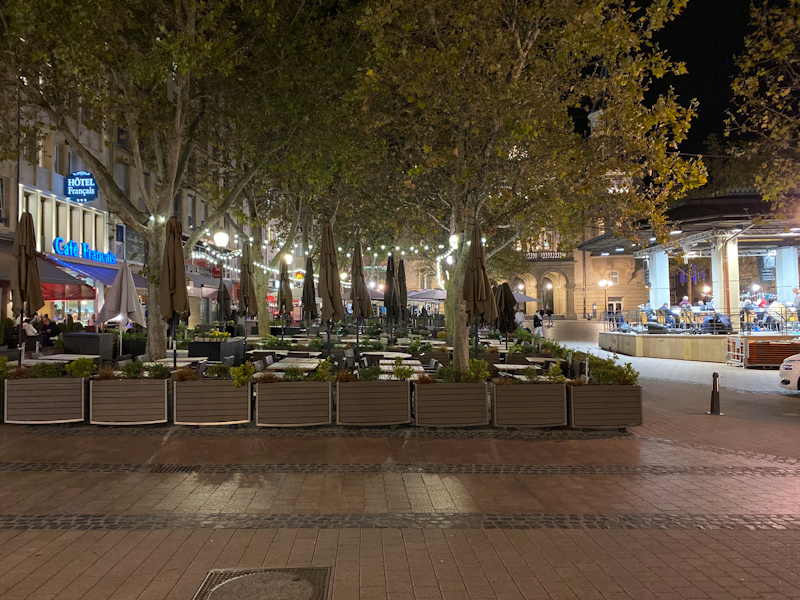
[ iPhone 11 Pro ] - [ iPhone XS ] - [ iPhone X ]
[ S10+(S) ] - [ S10+(E) ]
[ Pixel 3 ] - [ Mate 30 Pro ]
[ P30 Pro ] - [ Xperia 1 ] - [ G8 ]
Starting off with a low-light, yet still artificially illuminated scenario, we encounter the first aspect of Apple’s new camera: the night mode isn’t a dedicated mode that one can manually select. Rather, it's a mode that gets triggered automatically depending on the ambient light detected by the phone. In this scene, there was too much light available, and as such the phone wasn't able to trigger Night mode.
That isn’t to day that the iPhone falls behind, the main camera is still very much able to produce some excellent results. In such medium light scenarios, the telephoto lens’ wider aperture now allows the camera to actually use the module rather than falling back to the main sensor and cropping the scene, which is what the XS did.
Unfortunately, the wide-angle lens’ results here are just bad and it’s all just blurry. Huawei and Samsung clearly both dominate here in terms of low-light quality, with either better sensors such as the Mate 30 Pro, or making use of Night Mode on the wide-angle unit, something which isn’t available for the iPhone 11.
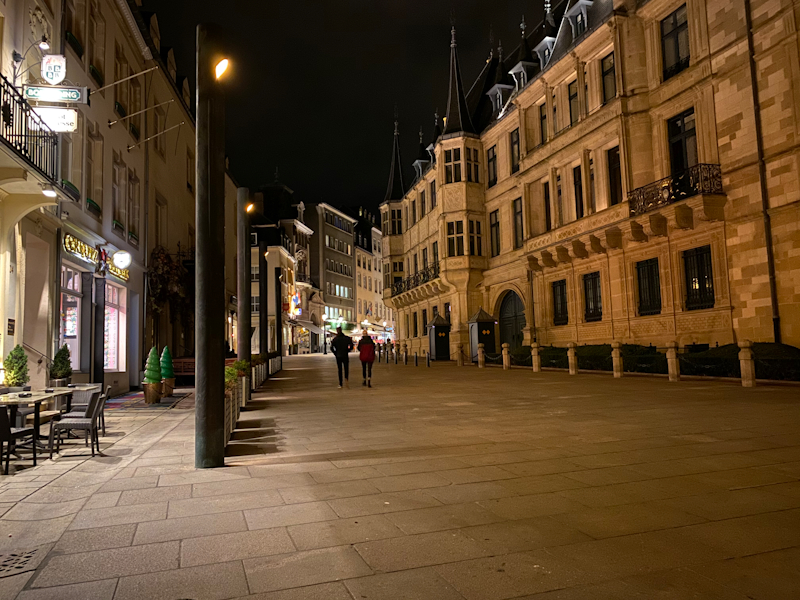
[ iPhone 11 Pro ] - [ iPhone XS ] - [ iPhone X ]
[ S10+(S) ] - [ S10+(E) ]
[ Pixel 3 ] - [ Mate 30 Pro ]
[ P30 Pro ] - [Xperia 1 ] - [G8 ]
Going to a darker scene, we now finally see Apple’s Night Mode in action. Apple’s non-night mode shot is actually more representative of the actual brightness of the scene at the time, but Night Mode really improves the amount of detail throughout the scene. Apple’s implementation here is superior to Samsung’s and Google’s, as it’s able to retain more detail and has a better handling of the noise. Samsung has the odd situation that the new Night Mode on the Snapdragon variants is inferior in quality to the Exynos based models, making things quite blurry. Huawei’s specialized low light RYYB sensor still is the best low-light camera.
It’s odd to see that Apple’s algorithm doesn’t attempt to bring down the highlights, as such the signs on the left which are still very much blown out and overexposed.
I tried to capture a picture with the Night Mode exposure set to the very maximum 10 seconds as made available in Apple’s camera UI, however the end result was always repeatedly always capped at the exposure the camera automatically selected, even if it did appear as if it’s capturing a 10 second shot. I retested this on the newest iOS 13.2 and things did change, as it was indeed able to capture a very different shot – so it seems the Night Mode behavior on iOS 13.1 is still bugged.
The iPhone’s 11 series' wide-angle module continues to be pretty terrible in low-light.
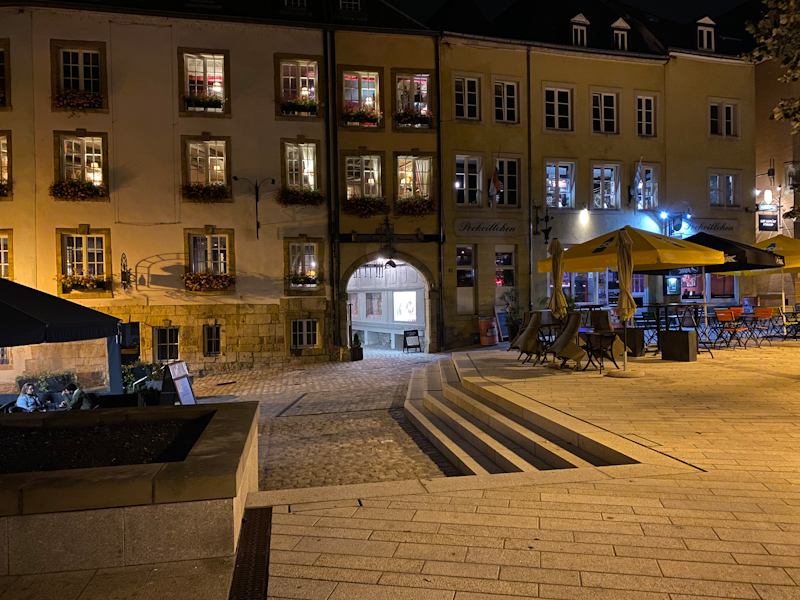
[ iPhone 11 Pro ] - [ iPhone XS ] - [ iPhone X ]
[ S10+(S) ] - [ S10+(E) ]
[ Pixel 3 ] - [ Mate 30 Pro ]
[ P30 Pro ] - [ Xperia 1 ] - [ G8 ]
Apple’s night mode here continues to impress as it’s able to reproduce an excellent representation of the scene with a lot of detail. Google’s Night Sight is comparable, or even better, in detail, however the colors are too vivid.
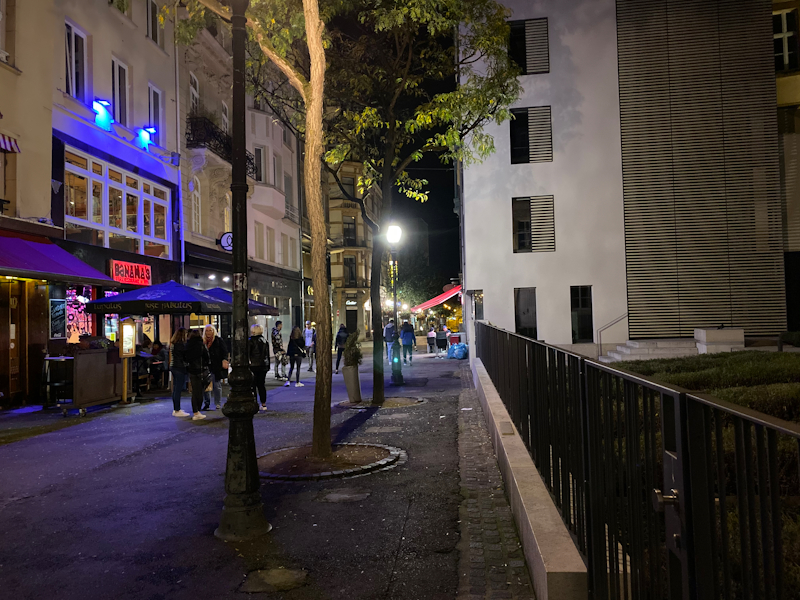
[ iPhone 11 Pro ] - [ iPhone XS ] - [ iPhone X ]
[ S10+(S) ] - [ S10+(E) ]
[ Pixel 3 ] - [ Mate 30 Pro ]
[ P30 Pro ] - [ Xperia 1 ] - [ G8 ]
We continue to observe that in more well-lit scenarios that the night mode doesn’t engage. Even without it, the new iPhone 11 is an improvement over the XS.
The wide-angle module remains terrible and frankly I’m a bit puzzled why it does so bad even in a more well-lit scene like this one. The phone gets pretty much embarrassed by all the other devices.
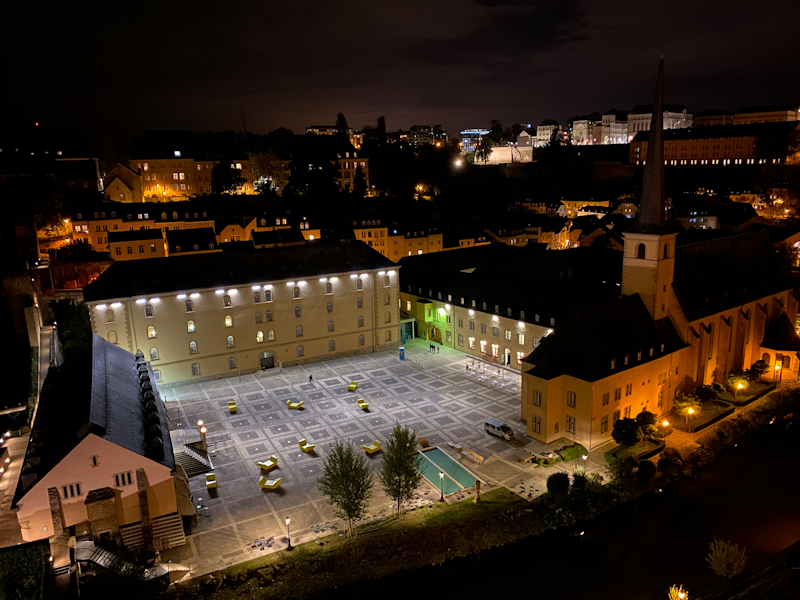
[ iPhone 11 Pro ] - [iPhone XS ] - [iPhone X ]
[ S10+(S) ] - [ S10+(E) ]
[ Pixel 3 ] - [ Mate 30 Pro ]
[ P30 Pro ] - [Xperia 1 ] - [G8 ]
One thing we notice about the new Night Mode is that it’s not really able to bring out details in areas where the sensor doesn’t see anything. For example, in this scene the roof of the abbey remains clipped to black, while other devices such as the S10 or the Pixel are able to bring out the roof’s structure and details. The darker it gets, and as long as there’s some brighter elements to the scene, we’re seemingly hitting dynamic range limitations on Apple’s night mode.
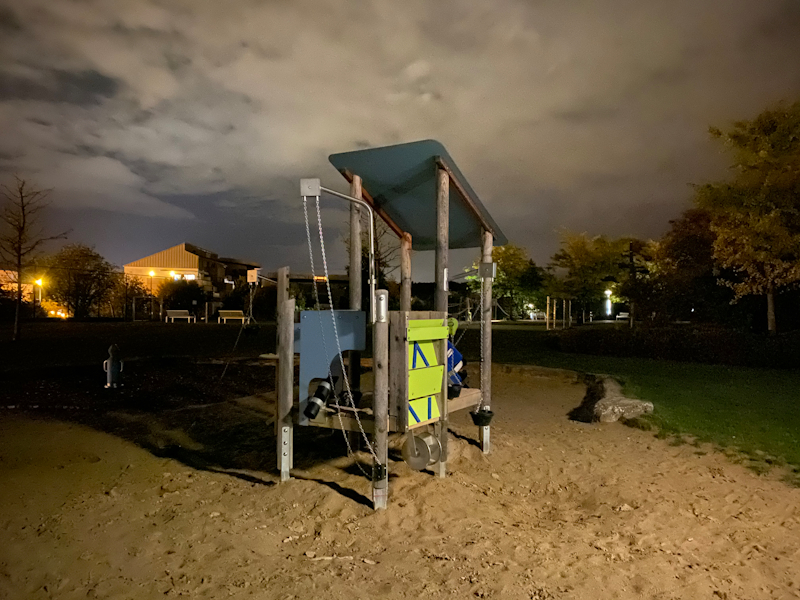
[ iPhone 11 Pro ] - [ iPhone XS ] - [ iPhone X ]
[ S10+(S) ] - [ S10+(E) ]
[ Pixel 3 ] - [ Mate 30 Pro ]
[ P30 Pro ] - [ Xperia 1 ] - [ G8 ]
In more uniformly dark areas, the iPhone is able to extract a ton of light, but in areas where the sensor just isn’t sensitive enough and it’s not able to provide any data for the algorithm to accumulate over time, it leads in some odd looking results such as this extremely pronounced shadow of the play castle.
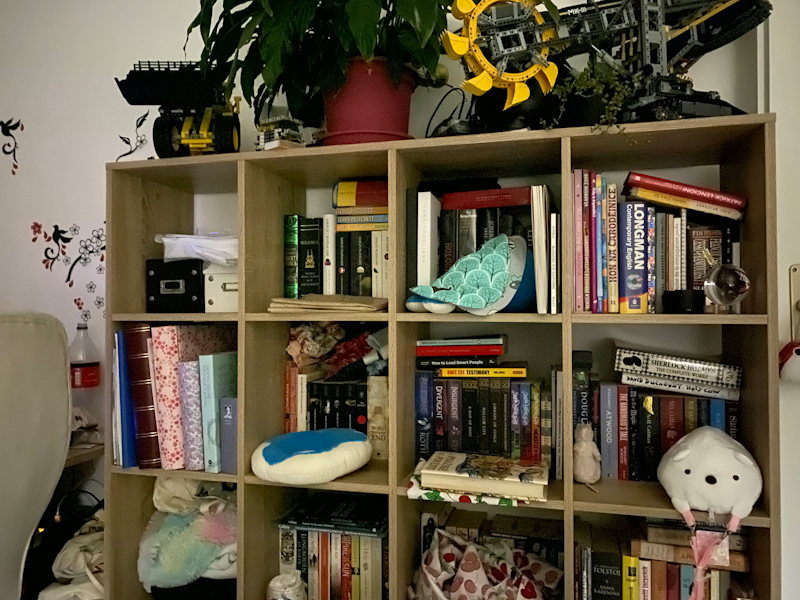
[ iPhone 11 Pro ] - [ iPhone XS ] - [ iPhone X ]
[ S10+(S) ] - [ S10+(E) ]
[ Pixel 3 ] - [ Mate 30 Pro ]
[ P30 Pro ] - [ Xperia 1 ] - [ G8 ]
Here again, in a very uniformly lit but still extremely dim scene, the iPhone 11 is able to bring out a ton of light and the result here is significantly brighter than how the scene was in reality. The iPhone beats Google and Samsung in terms of detail and only Huawei’s devices remain as the better rivals.
Low Light Conclusion – A Much Needed Feature Added, Wide Angle Lacking
Overall, Apple’s addition of the new night mode very much elevates the camera capture ability of the iPhone 11 series. It was as solemnly needed feature given that almost all other vendors in the industry have embarked on the computational photography train.
Apple’s implementation shines in a few regards: First of all the fact that it gets selected automatically rather than it being a dedicated mode that you have to switch to is a significant plus. as well as a very large practical advantage over other vendor’s camera experiences.
Quality-wise the pictures that the iPhone 11 series is able to produce in low light is top of the line and is challenged only by Huawei’s massive specialized camera sensors in terms of detail that it’s able to capture. There are a few limitations – for example the phone isn’t able to bring out details in areas where the sensor just doesn’t see anything, particularly scenes with brighter objects requiring a wider dynamic range in the capture is where things hit a snag, although details are still excellent even in these scenarios.
The biggest disappointment was the wide-angle camera. Here it’s not only that Apple’s night mode photography isn’t available for this unit, but the module doesn’t even compete against phones without their respective night modes enabled. So the iPhone 11 series is utterly put to shame when they do enable it. I do hope Apple is able to iterate on its processing for this unit as currently it’s just outright terrible and not competitive.
I do have a feeling that we’ll be seeing further updates and improvements from Apple in improving the various aspect of the camera. Already I did notice that iOS13.2 fixes exposures longer than 3 seconds for the night mode, and there’s of course the question of how Deep Fusion behaves in low-light scenarios where the night mode doesn’t kick in.










242 Comments
View All Comments
lmcd - Wednesday, October 16, 2019 - link
Dunno what this is supposed to mean. Given how well Qualcomm chips do with Windows and the superior performance of Apple vs Qualcomm, you're really just spouting nonsense.joms_us - Wednesday, October 16, 2019 - link
Where is superiority you say? These apps does what Spec or GB does and yet iPhone A11 is not showing desktop-level performance here versus OP7https://www.youtube.com/watch?v=Ic8q1kPseVE
It is even laughable that this iPhone 11 is not faster than the older iPhone XS
https://www.youtube.com/watch?v=i-P0KRlbH1M
If A13 is truly superior than some desktop processors, why are we not seeing/hearing anything it replacing processors inside MBP? I am sure Apple can port it easily to Windows or Linux if they wanted to.
lmcd - Wednesday, October 16, 2019 - link
Did you actually just link GUI/responsiveness hand-testing videos? Why do you think those add anything to the conversation? Arguing about the performance of a given GUI library tells us nothing about the SoCs involved.A13 is truly superior to some binnings of laptop-class processors running at nearly 10x its power consumption. That's why it or a larger version of it (a future A13X) will run in a future iPad Pro that should perform in the same class as the Surface Pro 7 and Surface Pro X.
Yea, it won't win versus the top models. But it'll certainly beat the lower-end Pro 7, with an anemic i3. And that includes single-core performance.
So yea, it wouldn't be the top desktop processor, but it certainly can and will scale up to "desktop-class performance." It doesn't scale up to a premium experience at a desktop level yet, so there's no place for it yet in the Apple desktop product stack.
Diogene7 - Wednesday, October 16, 2019 - link
On a personal basis, I am much more interested by 1. fanless computers and 2. responsiveness (latency) over raw peak performance for a future laptop or even desktop computer as I am mostly using my computer to surf the web / watch videos.That is the reason I really, really like the idea of Qualcomm 8cx processor as in the Samsung Galaxy book S : Quiet laptop (no fan), thin, light, excellent battery life... The unknow is responsiveness : will the performance be good enough that lag won’t be felt more than a standard Intel / AMD laptop ?
If the responsiveness of a Qualcomm 8cx / future Apple A14 is good enough, then a fanless laptop, but also a fanless desktop has much, much appeal to myself !!!
If I was Apple, I would try to introduce ARM mac computers with both an Apple A14 / Apple A15 in combination with Storage Class Memory (SCM) to get never seen before low latency (excellent responsiveness) fanless mac computers : sure it would maybe take more time to do some intensive tasks on those computers (ex: video editing), but basic day to day task (launching Safari,...) would feel soooo much faster (like using a SSD everything faster compare to a mechanical HDD).
WinterCharm - Wednesday, October 16, 2019 - link
ARM macs are coming in 2020.You will see these chips in a mac. With active cooling they are going to DESTROY anything Intel and AMD have to offer.
Alistair - Wednesday, October 16, 2019 - link
These tests we are looking at are occurring at 2.6Ghz for the A13. And it is basically equal to the 4Ghz+ 9900k. Imagine the A13 running at 3.5Ghz, I think it already surpasses Intel easily enough.joms_us - Wednesday, October 16, 2019 - link
Nonsense, show us proof or it did not happen. Even a mere 2Ghz Ryzen is faster than any smartphone today.Alistair - Wednesday, October 16, 2019 - link
The iPhone uses 2 fast cores. Yes, it is equal to a dual core Ryzen or a dual core Intel CPU. I want Intel to be faster, but that would have required them to do ANYTHING meaningful since the i7-2700k came out instead of just repackaging the same CPU over and over.WinterCharm - Thursday, October 17, 2019 - link
The proof is right on page 4 of this article, or did you not read it?joms_us - Wednesday, October 16, 2019 - link
Crossing my fingers, I will be happy even if I can just drag and file my files here and there or perhaps compile my x86 apps. =D